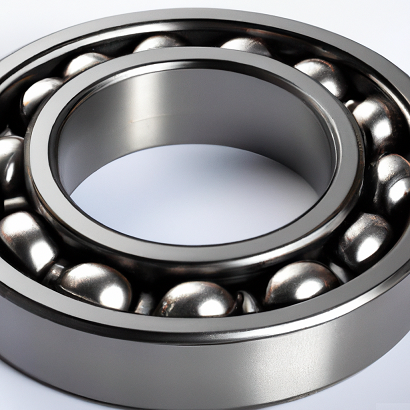

A radial bearing is a type of rolling-element bearing that is designed to support loads perpendicular to the shaft axis, which is known as radial loads. A metric radial bearing is a type of radial bearing that conforms to metric standards. Radial ball bearings are engineered to withstand forces that act perpendicular to the shaft, known as radial loads. While some ball bearings can endure both radial and axial loads applied on the shaft, these types of bearings are typically achieved through the use of axial angular contact, allowing them to handle combined axial/radial loads
Metric radial bearings typically consist of an inner ring, an outer ring, rolling elements (such as balls or rollers) that are located between the inner and outer rings, and a cage that holds the rolling elements in place. The rolling elements roll on the raceways of the inner and outer rings, allowing the bearing to support radial loads while minimizing friction and wear.
Metric radial bearings are used in a wide range of applications, including automotive, aerospace, industrial machinery, and power generation. They are available in a variety of sizes and configurations to suit different applications and operating conditions.
To select the appropriate metric radial bearing for a given application, factors such as load capacity, speed, temperature, and environmental conditions must be taken into account. Additionally, factors such as bearing type, lubrication, and sealing can also impact bearing performance and longevity.
1. Radial load capacity: Radial bearings are designed to support radial loads, which are loads that are perpendicular to the axis of rotation. The load capacity of a radial bearing depends on factors such as the size of the bearing, the type of rolling elements used, and the materials used in the bearing construction.
2. Axial load capacity: In addition to supporting radial loads, some types of radial bearings can also support limited axial loads, which are loads that are parallel to the axis of rotation. However, axial load capacity is typically lower than radial load capacity.
3. Friction and wear: Radial bearings are designed to minimize friction and wear between the rolling elements and the raceways of the inner and outer rings. Factors that can affect friction and wear include the materials used in the bearing construction, the lubrication used, and the operating conditions of the bearing.
4. Speed: Radial bearings can operate at high speeds, depending on factors such as the size of the bearing, the type of rolling elements used, and the lubrication used.
5. Operating temperature: The operating temperature range of a radial bearing depends on the materials used in the bearing construction and the lubrication used. High-temperature applications may require bearings with specialized materials or lubrication.
6. Noise and vibration: Radial bearings can generate noise and vibration during operation, which can affect the performance and lifespan of the bearing. Factors that can impact noise and vibration include the bearing design, the lubrication used, and the operating conditions of the bearing.
Therefore, selecting a suitable bearing supplier who can reliably source quality bearings is crucial for ensuring that the bearing meets the requirements of your application.